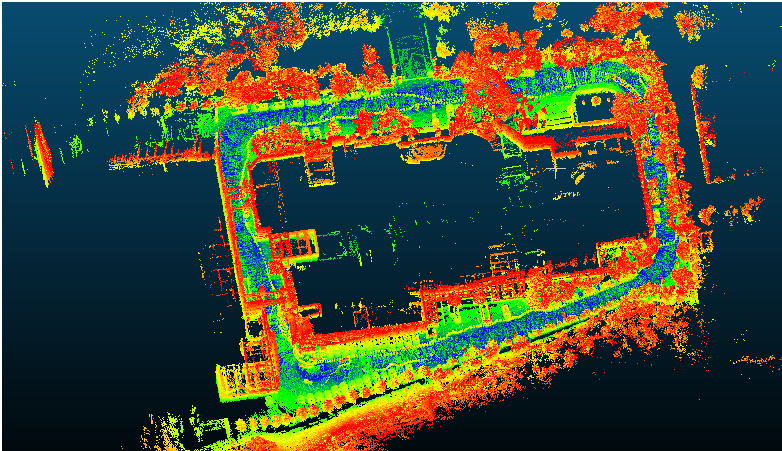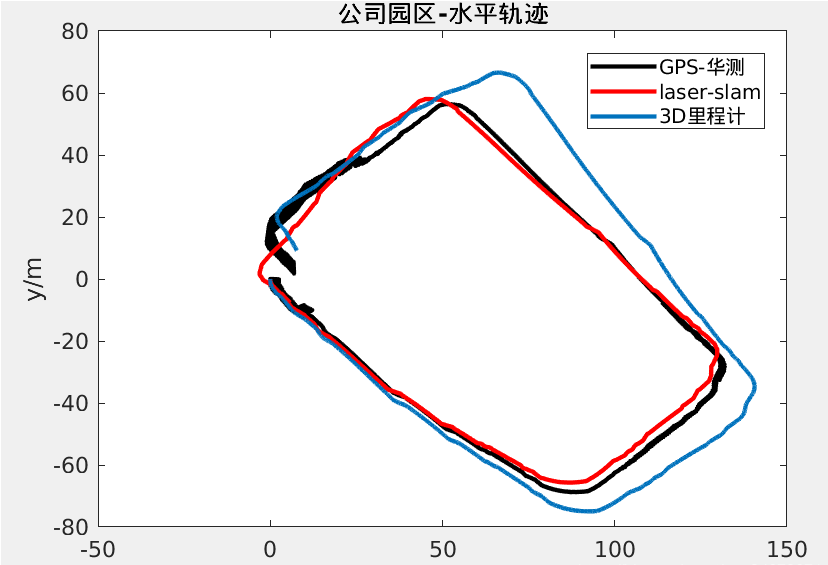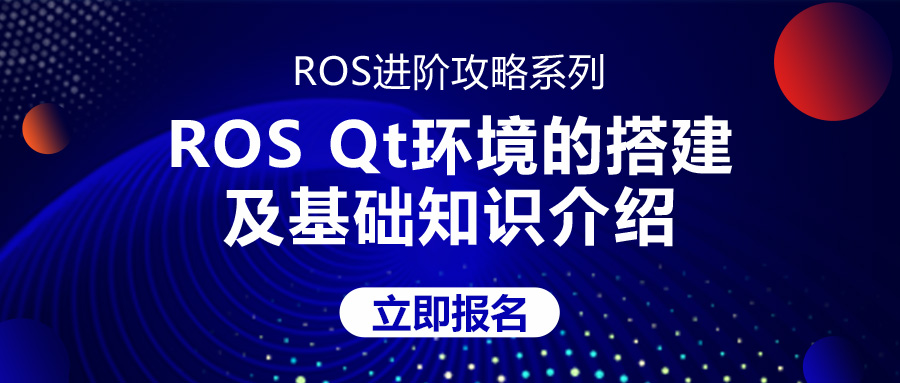0. 前言
最近无事,在想着做一些工作。正好碰巧看到了yuanguobin01作者写的Lego-Loam的改进思路系列文章,这部分看完后遗憾于作者仅仅提供了一些初步的设想,而没有系统的学习代码,为此本文打算从作者提出的几个改进点来给出自己实现的策略思路。
1. 二维轮式里程计+IMU = 三维里程计 替换 原本3D激光前端里程计
这部分作者说通过二维里程计提供位移 + IMU航姿模块提供三向角度 投影成三维轮式IMU里程计 算率很低,实现很方便。很适合三维轮式里程计的操作。为此本文直接给出geometry_msgs::TwistStamped部分的操作,个人感觉使用IMU中值滤波。能够使整个结构更加紧凑。
void wheelHandler(const geometry_msgs::TwistStampedConstPtr &wheel_msg)
{
using Eigen::Vector3d;
if (wheel_msg->header.stamp.toSec() <= last_wheel_t)
{
ROS_WARN("wheel message in disorder!");
return;
}
double t = wheel_msg->header.stamp.toSec();
last_wheel_t = t;
double vx = wheel_msg->twist.linear.x;
double vy = wheel_msg->twist.linear.y;
double vz = wheel_msg->twist.linear.z;
double rx = wheel_msg->twist.angular.x;
double ry = wheel_msg->twist.angular.y;
double rz = wheel_msg->twist.angular.z;
Vector3d vel(vx, vy, vz);
Vector3d gyr(rx, ry, rz);
inputWheel(t, vel, gyr);
if (init_wheel)
{
latest_time = t;
init_wheel = 0;
return;
}
double dt = t - latest_time;
latest_time = t;
tmp_Q = tmp_Q * Utility::deltaQ(gyr * dt);
tmp_P = tmp_P + tmp_Q.toRotationMatrix() * vel * dt;
tmp_V = vel;
nav_msgs::Odometry wheelOdometry;
wheelOdometry.header.frame_id = "/camera_init";
wheelOdometry.child_frame_id = "/laser_odom";
wheelOdometry.header.stamp = ros::Time().fromSec(t);
wheelOdometry.pose.pose.orientation.x = tmp_Q.x();
wheelOdometry.pose.pose.orientation.y = tmp_Q.y();
wheelOdometry.pose.pose.orientation.z = tmp_Q.z();
wheelOdometry.pose.pose.orientation.w = tmp_Q.w();
wheelOdometry.pose.pose.position.x = tmp_P.x();
wheelOdometry.pose.pose.position.y = tmp_P.y();
wheelOdometry.pose.pose.position.z = tmp_P.z();
pubWheelOdometry.publish(wheelOdometry);
geometry_msgs::PoseStamped wheelPose;
wheelPose.header = wheelOdometry.header;
wheelPose.pose = wheelOdometry.pose.pose;
wheelPath.header.stamp = wheelOdometry.header.stamp;
wheelPath.poses.push_back(wheelPose);
wheelPath.header.frame_id = "/camera_init";
pubWheelPath.publish(wheelPath);
if (saveWheelOdo) {
std::ofstream founW("xxx/results/wheel_odo.txt",
std::ios::app);
founW.setf(std::ios::fixed, std::ios::floatfield);
founW.precision(5);
founW << wheelOdometry.header.stamp.toSec() << " ";
founW.precision(5);
founW << wheelOdometry.pose.pose.position.x << " "
<< wheelOdometry.pose.pose.position.y << " "
<< wheelOdometry.pose.pose.position.z << " "
<< wheelOdometry.pose.pose.orientation.x << " "
<< wheelOdometry.pose.pose.orientation.y << " "
<< wheelOdometry.pose.pose.orientation.z << " "
<< wheelOdometry.pose.pose.orientation.w << std::endl;
founW.close();
}
return;
}
2. 增加GPS模块
该部分作者说GPS因子的添加着重提高建图精度和长时间的鲁棒性,也可以用做回环检测。这部分的确能够给LEGO-LOAM系统带来良好的收益。这部分我们可以先看一下坐标系转换
void laserOdometryHandler(const nav_msgs::Odometry::ConstPtr& laserOdometry)
{
// ********************************* 激光里程计 --> 全局位姿 ***********************************
// 0. 北斗星通的惯导系为北东地,大地坐标转换函数的坐标系为东北天,这里现将惯导系作处理,转为东北天
// 将大地坐标的xyz和惯导输出的rpy统一到东北天坐标系下。
// 1. 激光系 --> 车体系:一个平移,不考虑惯导安装,因为可以直接从第一帧的RTK消息中,得知第一帧的车体系到东北天坐标系下的变换
// 和ros标准保持一致,默认将前进方向设置为x,向上为z
// 2. 车体系 --> 东北天:坐标变换,利用第一帧的xyzrpy变换得到。
// ************************************************************************************************
Eigen::Isometry3d mLidar = Eigen::Isometry3d::Identity(); // 将当前的位姿赋值给mBody
mLidar.rotate(Eigen::Quaterniond(
laserOdometry2.pose.pose.orientation.x,
laserOdometry2.pose.pose.orientation.y,
laserOdometry2.pose.pose.orientation.z,
laserOdometry2.pose.pose.orientation.w
));
mLidar.translate(Eigen::Vector3d(
laserOdometry2.pose.pose.position.x, // 直接将激光剪掉
laserOdometry2.pose.pose.position.y,
laserOdometry2.pose.pose.position.z
));
// 1. mLidar --> mBody
Eigen::Isometry3d tLidar2Body = Eigen::Isometry3d::Identity();//平移
tLidar2Body.translate(Eigen::Vector3d(1.83,0,0));//旋转
Eigen::Isometry3d mBody = tLidar2Body*mLidar;
// 2. mBody --> ENU
Eigen::Isometry3d mENU = tBody2ENU*mBody;
// ********************************* 全局位姿 --> 激光里程计 ***********************************
// Body到ENU原点,因此是负数
mENU.translate(Eigen::Vector3d(RTK->x,RTK->y,RTK->Ati);
// RTK的RPY测量的是车体相对于ENU坐标系的旋转
mENU.rotate(Eigen::Quaterniond(Eigen::AngleAxisd(RTK->yaw*PI/180.0,Eigen::Vector3d::UnitZ())*
Eigen::AngleAxisd(RTK->pitch*PI/180.0,Eigen::Vector3d::UnitY())*
Eigen::AngleAxisd(RTK->roll*PI/180.0,Eigen::Vector3d::UnitX()));//欧拉角转四元数
// 1. ENU --> mBody
Eigen::Isometry3d mBody = tBody2ENU.inverse()*mENU;
// 2. mBody --> mLidar
Eigen::Isometry3d mLidar = tLidar2Body.inverse()*mBody;
}
// 涉及到三个坐标系:gps,body,lidar
// body和lidar差一个平移
void rtkHandler(const bdxt::rtk::ConstPtr& RTK)
{
if(!is_gps_init){ // gps初始值记录
if(RTK->navStatus == 4 && RTK->rtkStatus == 5){
// qBody2ENU计算车体坐标系到gps(东北天)坐标系的旋转
// 而可以获取的imu读数是惯导系下的值(北东地),因此需要作变换:BODY-->北东地-->东北天
// 涉及两个四元数:qBODY2NED,qNED2ENU
Eigen::Vector3d vBody2ENU; // gps初始化位姿:x,y,z,pitch,yaw,roll,同时也是激光原点坐标系和大地坐标系的静态变换
Eigen::Quaterniond qBody2ENU; // body到ENU的旋转变换
// RTK的RPY测量的是车体相对于ENU坐标系的旋转
Eigen::Quaterniond qBodyNED_; // Body相对于NED坐标系下的旋转,实际上是NED2BODY
qBodyNED_ = Eigen::AngleAxisd(RTK->yaw*PI/180.0,Eigen::Vector3d::UnitZ())*
Eigen::AngleAxisd(RTK->pitch*PI/180.0,Eigen::Vector3d::UnitY())*
Eigen::AngleAxisd(RTK->roll*PI/180.0,Eigen::Vector3d::UnitX());//欧拉角转四元数
Eigen::Quaterniond qBody2NED = qBodyNED_.conjugate();//反转四元数
// 东北天 --> 北东地,先z轴旋转PI/2,再x轴旋转PI,注意顺序
Eigen::Quaterniond qNED2ENU;
qNED2ENU = Eigen::AngleAxisd(PI/2,Eigen::Vector3d::UnitZ())*
Eigen::AngleAxisd(PI,Eigen::Vector3d::UnitX());
//注意顺序,从右到左变换
qBody2ENU = qNED2ENU*qBody2NED;
// Body到ENU原点,因此是负数
vBody2ENU[0] = -RTK->x; // 如果使用第一帧为坐标原点坐标转换,设置为0
vBody2ENU[1] = -RTK->y; // 如果使用第一帧为坐标原点坐标转换,设置为0
vBody2ENU[2] = -RTK->Ati; // 如果使用第一帧为坐标原点坐标转换,设置为0
// 得到变换矩阵
tBody2ENU.rotate(qBody2ENU);
tBody2ENU.translate(vBody2ENU);
is_gps_init = true;
}
else{
ROS_INFO("bad RTK status\n");
}
}
}
在转换后我们可以通过EKF或者Ceres带入进去,并在前端实现优化。而作者说的后端部分优化可以参考下面的部分文档,基本上就是在GTSAM中加入GPS因子
isamCurrentEstimate = isam->calculateEstimate();//这部分可以替换为RTK,不需要实时融合传入。如果认为RTK精度足够的话
double recentOptimizedX = lastOptimizedPose.translation().x();
double recentOptimizedY = lastOptimizedPose.translation().y();
double bigNoiseTolerentToXY = 1000000000.0; // 1e9
double gpsAltitudeNoiseScore = 250.0; // if height is misaligned after loop clsosing, use this value bigger
gtsam::Vector robustNoiseVector3(3); // gps factor has 3 elements (xyz)
robustNoiseVector3 << bigNoiseTolerentToXY, bigNoiseTolerentToXY, gpsAltitudeNoiseScore; // means only caring altitude here. (because LOAM-like-methods tends to be asymptotically flyging)
robustGPSNoise = gtsam::noiseModel::Robust::Create(
gtsam::noiseModel::mEstimator::Cauchy::Create(1), // optional: replacing Cauchy by DCS or GemanMcClure is okay but Cauchy is empirically good.
gtsam::noiseModel::Diagonal::Variances(robustNoiseVector3) );
// 找到最合适的GPS信息,这里速度够慢可以不对齐
double eps = 0.1; // 在eps内找到一个GPS主题
while (!gpsBuf.empty()) {
auto thisGPS = gpsBuf.front();
auto thisGPSTime = thisGPS->header.stamp.toSec();
if( abs(thisGPSTime - timeLaserOdometry) < eps ) {
currGPS = thisGPS;
hasGPSforThisKF = true;
break;
} else {
hasGPSforThisKF = false;
}
gpsBuf.pop();
}
mBuf.unlock();
// gps factor
const int curr_node_idx = keyframePoses.size() - 1; // 因为索引从0开始(实际上这个索引可以是任何数字,但为了简单的实现,我们遵循顺序索引)
if(hasGPSforThisKF) {
double curr_altitude_offseted = currGPS->altitude - gpsAltitudeInitOffset;
mtxRecentPose.lock();
gtsam::Point3 gpsConstraint(recentOptimizedX, recentOptimizedY, curr_altitude_offseted); // 在这个例子中,只调整高度(对于x和y,设置了很大的噪音)
mtxRecentPose.unlock();
gtSAMgraph.add(gtsam::GPSFactor(curr_node_idx, gpsConstraint, robustGPSNoise));
cout << "GPS factor added at node " << curr_node_idx << endl;
}
initialEstimate.insert(curr_node_idx, poseTo);
!--https://github.com/gisbi-kim/SC-A-LOAM/blob/main/src/laserPosegraphOptimization.cpp--
3. Scan-Context加入
这部分可以参考我之前写的系列文章。
文中也给出在LOAM系列中回环检测主要存在有四种方法
- 传统的领域距离搜索+ICP匹配
- 基于scan context系列的粗匹配+ICP精准匹配的回环检测
- 基于scan context的回环检测
- 基于Intensity scan context+ICP的回环检测
下面是Intensity scan context的部分操作
void mapOptimization::performLoopClosure(void) {
if (cloudKeyPoses3D->points.empty() == true)
return;
// try to find close key frame if there are any
if (potentialLoopFlag == false) {
if (detectLoopClosure() == true) {
std::cout << std::endl;
potentialLoopFlag = true; // find some key frames that is old enough or close enough for loop closure
timeSaveFirstCurrentScanForLoopClosure = timeLaserOdometry;
}
if (potentialLoopFlag == false) {
return;
}
}
// reset the flag first no matter icp successes or not
potentialLoopFlag = false;
// *****
// Main
// *****
// make common variables at forward
float x, y, z, roll, pitch, yaw;
Eigen::Affine3f correctionCameraFrame;
float noiseScore = 0.5; // constant is ok...
gtsam::Vector Vector6(6);
Vector6 << noiseScore, noiseScore, noiseScore, noiseScore, noiseScore, noiseScore;
constraintNoise = noiseModel::Diagonal::Variances(Vector6);
robustNoiseModel = gtsam::noiseModel::Robust::Create(
gtsam::noiseModel::mEstimator::Cauchy::Create(1), // optional: replacing Cauchy by DCS or GemanMcClure
gtsam::noiseModel::Diagonal::Variances(Vector6)
); // - checked it works. but with robust kernel, map modification may be delayed (i.e,. requires more true-positive loop factors)
bool isValidRSloopFactor = false;
bool isValidSCloopFactor = false;
/*
* 1. RS loop factor (radius search)
* 将RS检测到的历史帧和当前帧匹配,求transform, 作为约束边
*/
if (RSclosestHistoryFrameID != -1) {
pcl::IterativeClosestPoint<PointType, PointType> icp;
icp.setMaxCorrespondenceDistance(100);
icp.setMaximumIterations(100);
icp.setTransformationEpsilon(1e-6);
icp.setEuclideanFitnessEpsilon(1e-6);
icp.setRANSACIterations(0);
// Align clouds
icp.setInputSource(RSlatestSurfKeyFrameCloud);
icp.setInputTarget(RSnearHistorySurfKeyFrameCloudDS);
pcl::PointCloud<PointType>::Ptr unused_result(new pcl::PointCloud<PointType>());
icp.align(*unused_result);
// 通过score阈值判定icp是否匹配成功
std::cout << "[RS] ICP fit score: " << icp.getFitnessScore() << std::endl;
if (icp.hasConverged() == false || icp.getFitnessScore() > historyKeyframeFitnessScore) {
std::cout << "[RS] Reject this loop (bad icp fit score, > " << historyKeyframeFitnessScore << ")"
<< std::endl;
isValidRSloopFactor = false;
} else {
std::cout << "[RS] The detected loop factor is added between Current [ " << latestFrameIDLoopCloure
<< " ] and RS nearest [ " << RSclosestHistoryFrameID << " ]" << std::endl;
isValidRSloopFactor = true;
}
// 这里RS检测成功,加入约束边
if (isValidRSloopFactor == true) {
correctionCameraFrame = icp.getFinalTransformation(); // get transformation in camera frame (because points are in camera frame)
pcl::getTranslationAndEulerAngles(correctionCameraFrame, x, y, z, roll, pitch, yaw);
Eigen::Affine3f correctionLidarFrame = pcl::getTransformation(z, x, y, yaw, roll, pitch);
// transform from world origin to wrong pose
Eigen::Affine3f tWrong = pclPointToAffine3fCameraToLidar(
cloudKeyPoses6D->points[latestFrameIDLoopCloure]);
// transform from world origin to corrected pose
Eigen::Affine3f tCorrect =
correctionLidarFrame * tWrong; // pre-multiplying -> successive rotation about a fixed frame
pcl::getTranslationAndEulerAngles(tCorrect, x, y, z, roll, pitch, yaw);
gtsam::Pose3 poseFrom = Pose3(Rot3::RzRyRx(roll, pitch, yaw), Point3(x, y, z));
gtsam::Pose3 poseTo = pclPointTogtsamPose3(cloudKeyPoses6D->points[RSclosestHistoryFrameID]);
gtsam::Vector Vector6(6);
std::lock_guard<std::mutex> lock(mtx);
gtSAMgraph.add(
BetweenFactor<Pose3>(latestFrameIDLoopCloure, RSclosestHistoryFrameID, poseFrom.between(poseTo),
robustNoiseModel));
isam->update(gtSAMgraph);
isam->update();
gtSAMgraph.resize(0);
}
}
/*
* 2. SC loop factor (scan context)
* SC检测成功,进行icp匹配
*/
if (SCclosestHistoryFrameID != -1) {
pcl::IterativeClosestPoint<PointType, PointType> icp;
icp.setMaxCorrespondenceDistance(100);
icp.setMaximumIterations(100);
icp.setTransformationEpsilon(1e-6);
icp.setEuclideanFitnessEpsilon(1e-6);
icp.setRANSACIterations(0);
// Align clouds
// Eigen::Affine3f icpInitialMatFoo = pcl::getTransformation(0, 0, 0, yawDiffRad, 0, 0); // because within cam coord: (z, x, y, yaw, roll, pitch)
// Eigen::Matrix4f icpInitialMat = icpInitialMatFoo.matrix();
icp.setInputSource(SClatestSurfKeyFrameCloud);
icp.setInputTarget(SCnearHistorySurfKeyFrameCloudDS);
pcl::PointCloud<PointType>::Ptr unused_result(new pcl::PointCloud<PointType>());
icp.align(*unused_result);
// icp.align(*unused_result, icpInitialMat); // PCL icp non-eye initial is bad ... don't use (LeGO LOAM author also said pcl transform is weird.)
std::cout << "[SC] ICP fit score: " << icp.getFitnessScore() << std::endl;
if (icp.hasConverged() == false || icp.getFitnessScore() > historyKeyframeFitnessScore) {
std::cout << "[SC] Reject this loop (bad icp fit score, > " << historyKeyframeFitnessScore << ")"
<< std::endl;
isValidSCloopFactor = false;
} else {
std::cout << "[SC] The detected loop factor is added between Current [ " << latestFrameIDLoopCloure
<< " ] and SC nearest [ " << SCclosestHistoryFrameID << " ]" << std::endl;
isValidSCloopFactor = true;
}
// icp匹配成功也加入约束边
if (isValidSCloopFactor == true) {
correctionCameraFrame = icp.getFinalTransformation(); // get transformation in camera frame (because points are in camera frame)
pcl::getTranslationAndEulerAngles(correctionCameraFrame, x, y, z, roll, pitch, yaw);
gtsam::Pose3 poseFrom = Pose3(Rot3::RzRyRx(roll, pitch, yaw), Point3(x, y, z));
gtsam::Pose3 poseTo = Pose3(Rot3::RzRyRx(0.0, 0.0, 0.0), Point3(0.0, 0.0, 0.0));
std::lock_guard<std::mutex> lock(mtx);
// gtSAMgraph.add(BetweenFactor<Pose3>(latestFrameIDLoopCloure, closestHistoryFrameID, poseFrom.between(poseTo), constraintNoise)); // original
gtSAMgraph.add(
BetweenFactor<Pose3>(latestFrameIDLoopCloure, SCclosestHistoryFrameID, poseFrom.between(poseTo),
robustNoiseModel)); // giseop
isam->update(gtSAMgraph);
isam->update();
gtSAMgraph.resize(0);
}
}
// flagging
aLoopIsClosed = true;
} // performLoopClosure
4. 添加一段距离的闭环约束
这部分我感觉有可能作者想要表达的意思是帧间纠正的问题,即为两点云帧之间的约束,而这部分其实就是在LEGO-LOAM部分上加入距离判断因子
void extractSurroundingKeyFrames(pcl::PointCloud<PointType>::Ptr cloudToExtract)
{
// vector: cloudToExtract有多少个位姿节点,就有多少帧点云数据
std::vector<pcl::PointCloud<PointType>> laserCloudCornerSurroundingVec;
std::vector<pcl::PointCloud<PointType>> laserCloudSurfSurroundingVec;
laserCloudCornerSurroundingVec.resize(cloudToExtract->size());
laserCloudSurfSurroundingVec.resize(cloudToExtract->size());
// extract surrounding map
#pragma omp parallel for num_threads(numberOfCores)
// 遍历提取到的位姿节点
for (int i = 0; i < (int)cloudToExtract->size(); ++i)
{
// 检查两个位姿节点的距离,并在一定范围内选取优化特征点
if (pointDistance(cloudToExtract->points[i], cloudKeyPoses3D->back()) > surroundingKeyframeSearchRadius+1)//生成局部地图0-surroundingKeyframeSearchRadius+1
continue;
// 取id,用来取姿态
int thisKeyInd = (int)cloudToExtract->points[i].intensity;
// 将提取的边沿点特征集合,变换到世界坐标系W
laserCloudCornerSurroundingVec[i] = *transformPointCloud(cornerCloudKeyFrames[thisKeyInd], &cloudKeyPoses6D->points[thisKeyInd]);
// 将提取的平面点特征集合,变换到世界坐标系W
laserCloudSurfSurroundingVec[i] = *transformPointCloud(surfCloudKeyFrames[thisKeyInd], &cloudKeyPoses6D->points[thisKeyInd]);
}
// fuse the map
/// 清空局部地图,再合并
laserCloudCornerFromMap->clear();
laserCloudSurfFromMap->clear();
// 遍历提取到的位姿节点
for (int i = 0; i < (int)cloudToExtract->size(); ++i)
{
// 合并边缘点和平面点特征,构成 世界坐标系W下的局部特征点云地图
*laserCloudCornerFromMap += laserCloudCornerSurroundingVec[i];
*laserCloudSurfFromMap += laserCloudSurfSurroundingVec[i];
}
/// 降采样
// Downsample the surrounding corner key frames (or map)
downSizeFilterCorner.setInputCloud(laserCloudCornerFromMap);
downSizeFilterCorner.filter(*laserCloudCornerFromMapDS);
laserCloudCornerFromMapDSNum = laserCloudCornerFromMapDS->size();
// Downsample the surrounding surf key frames (or map)
downSizeFilterSurf.setInputCloud(laserCloudSurfFromMap);
downSizeFilterSurf.filter(*laserCloudSurfFromMapDS);
laserCloudSurfFromMapDSNum = laserCloudSurfFromMapDS->size();
}
void mapOptimization::scan2MapOptimization() {
if (laserCloudCornerFromMapDSNum > 10 && laserCloudSurfFromMapDSNum > 100) {//这样即可代表降采样后特征点仍然足够
kdtreeCornerFromMap->setInputCloud(laserCloudCornerFromMapDS);
kdtreeSurfFromMap->setInputCloud(laserCloudSurfFromMapDS);
for (int iterCount = 0; iterCount < 10; iterCount++) {
laserCloudOri->clear();
coeffSel->clear();
cornerOptimization(iterCount);
surfOptimization(iterCount);
if (LMOptimization(iterCount) == true)
break;
}
// 迭代结束更新相关的转移矩阵
transformUpdate();
}
}


5. 参考链接
https://blog.csdn.net/qq_34672671/article/details/107542816?spm=1001.2014.3001.5501
https://www.guyuehome.com/34085
https://github.com/mohdomama/LIO-SAM






评论(3)
您还未登录,请登录后发表或查看评论